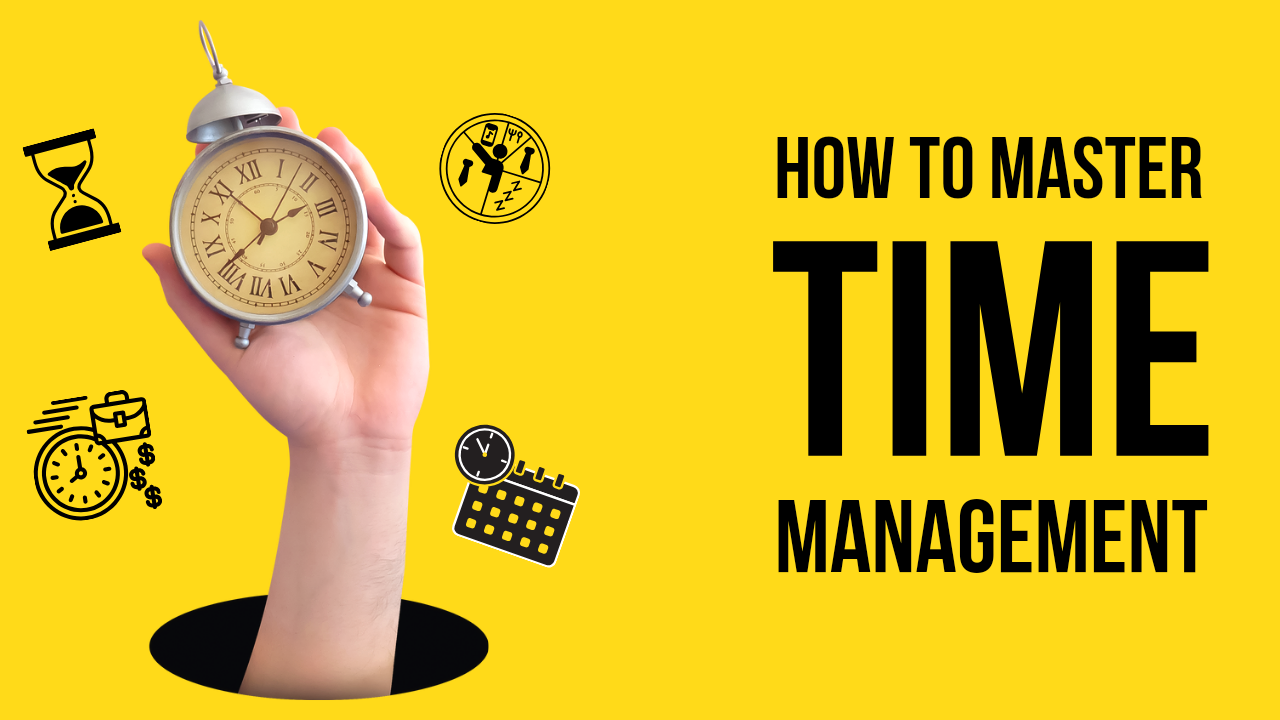How To Master Time Management

In the relentless pursuit of productivity, mastering the art of time management is a crucial skill. Balancing professional and personal responsibilities can be challenging, but with the right strategies, you can reclaim control over your time and achieve your goals. In this comprehensive blog post, we’ll delve into effective time management strategies that empower you to make the most out of each day.
Quick Links
- Prioritize with Purpose: The Eisenhower Matrix
- Time Blocking: Allocate Intentional Chunks of Time
- Pomodoro Technique: The Power of Short Bursts
- Eat That Frog: Tackle the Toughest Tasks First
- The Two-Minute Rule: Instant Task Resolution
- Batching: Group Similar Tasks Together
- Delegate Wisely: Leverage Your Team’s Strengths
- Digital Detox: Minimize Distractions
- Goal Setting: Align Tasks with Long-Term Objectives
- Reflect and Refine: Continuous Improvement
1. Prioritize with Purpose: The Eisenhower Matrix
Start your time management journey by adopting the Eisenhower Matrix. This powerful tool helps you categorize tasks based on urgency and importance, creating a clear roadmap for prioritization. Quadrant 1 contains urgent and important tasks, while Quadrant 2 focuses on important but not urgent tasks – a key area for proactive planning. Recommendations: Regularly reassess your tasks and adjust priorities as circumstances change.
2. Time Blocking: Allocate Intentional Chunks of Time
Time blocking involves breaking your day into distinct blocks, each dedicated to a specific type of activity or task. This strategy minimizes multitasking, enhances focus, and ensures that important responsibilities receive dedicated attention. Recommendation: Experiment with different time block durations and adapt them to your natural energy levels and workflow.
3. Pomodoro Technique: The Power of Short Bursts
Embrace the Pomodoro Technique, a time management method that revolves around short, focused bursts of work. Work diligently for 25 minutes, then take a 5-minute break. After completing four cycles, reward yourself with a more extended break. This approach enhances productivity by maintaining a balance between focus and relaxation. Recommendation: Use a timer or specialized Pomodoro apps to track your work and break intervals.
4. Eat That Frog: Tackle the Toughest Tasks First
Inspired by Brian Tracy’s “Eat That Frog,” this strategy encourages you to tackle the most challenging or important task first thing in the morning. By addressing significant tasks early, you set a positive tone for the day and ensure that crucial objectives are accomplished. Recommendation: Create a “frog” list and prioritize tasks based on their impact on your long-term goals.
5. The Two-Minute Rule: Instant Task Resolution
If a task takes less than two minutes to complete, do it immediately. This simple yet effective rule minimizes the accumulation of small, quick tasks and prevents them from becoming overwhelming. Recommendation: Prioritize tasks based on the two-minute rule to maintain a sense of accomplishment throughout the day.
6. Batching: Group Similar Tasks Together
Batching involves grouping similar tasks and completing them during dedicated time slots. This minimizes the mental effort required to switch between different types of activities and optimizes efficiency. Recommendation: Identify recurring tasks and designate specific times to address them collectively, enhancing workflow continuity.
7. Delegate Wisely: Leverage Your Team’s Strengths
Effective time management often involves recognizing when to delegate tasks. Leverage the strengths of your team members or collaborate with others to streamline processes and share the workload. Recommendation: Clearly communicate expectations when delegating and provide necessary support to ensure successful task completion.
8. Digital Detox: Minimize Distractions
Constant digital connectivity can hinder productivity. Embrace a digital detox by turning off non-essential notifications, silencing your phone during focused work periods, and creating a distraction-free environment. Recommendation: Utilize productivity apps or website blockers to minimize digital distractions during critical tasks.
9. Goal Setting: Align Tasks with Long-Term Objectives
Effective time management is inherently linked to goal setting. Clearly define your short-term and long-term goals, breaking them down into actionable tasks. This strategy provides direction and ensures that daily activities contribute to your overarching objectives. Recommendation: Regularly review and adjust your goals to align with changing priorities and aspirations.
10. Reflect and Refine: Continuous Improvement
Periodic reflection is crucial for refining your time management strategies. Assess what worked well and what could be improved. Make adjustments based on your observations to continuously enhance your efficiency. Recommendation: Set aside dedicated time each week or month to reflect on your time management practices and implement refinements.
In conclusion, mastering effective time management is a dynamic process that requires experimentation, adaptability, and a commitment to continuous improvement. By incorporating these strategies into your daily routine, you can navigate the challenges of a busy life with purpose and efficiency. Remember, the key to success lies not just in managing time but in managing it effectively to achieve your goals and aspirations.


